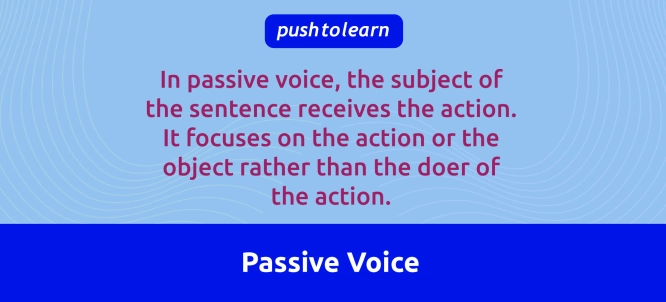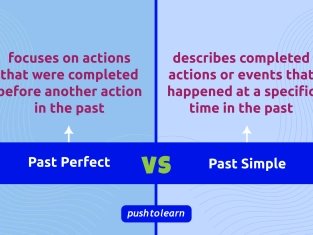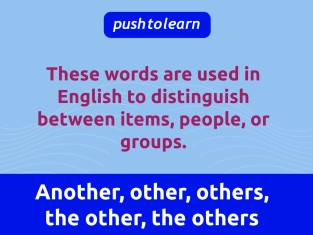by PushtoLearn
Active and passive voice
Table of Contents
- Active and Passive Voice – Exercises
- What is Active Voice?
- What is Passive Voice?
- Key Differences Between Active and Passive Voice
- When to Use Passive Voice
- How to Change from Active to Passive Voice
- Common Errors in Passive Voice
- Everyday Use of Active and Passive Voice
- FAQ: Active and Passive Voice
Active and Passive Voice – Exercises
These exercises focus on Active and Passive Voice
What is Active Voice?
In active voice, the subject of the sentence performs the action. It is direct, clear, and more common in everyday English.
Structure of Active Voice
Subject + Verb + Object
-
Example:
The teacher explains the lesson.
(The teacher is the subject, explains is the verb, and the lesson is the object.)

What is Passive Voice?
In passive voice, the subject of the sentence receives the action. It focuses on the action or the object rather than the doer of the action.
Structure of Passive Voice
Object + Form of "to be" + Past Participle (+ by + Subject)
-
Example:
The lesson is explained by the teacher.
(The lesson is the object of the action and comes first, followed by the verb in passive form.)
Key Differences Between Active and Passive Voice
|
Aspect |
Active Voice |
Passive Voice |
|
Focus |
On the subject (doer of the action). |
On the object (receiver of the action). |
|
Clarity |
Direct and easy to understand. |
Can be longer and less direct. |
|
Use |
Common in spoken and informal English. |
Used in formal writing or to focus on the action. |
|
Example |
She baked a cake. |
A cake was baked by her. |
When to Use Passive Voice
-
When the doer is unknown or unimportant
-
The windows were broken. (We don’t know who broke them.)
-
To focus on the action or object
-
The letter was delivered yesterday. (Focuses on the letter, not who delivered it.)
-
In formal or scientific writing
-
The experiment was conducted by the researchers.
How to Change from Active to Passive Voice
Follow these steps to convert a sentence from active to passive:
-
Identify the subject, verb, and object in the active sentence.
-
Example: The cat (subject) chased (verb) the mouse (object).
-
Move the object to the subject position.
-
The mouse...
-
Use the correct form of "to be" + the past participle of the verb.
-
The mouse was chased...
-
Add "by" + the subject (optional, if the doer is important).
-
The mouse was chased by the cat.
Examples: Active to Passive Conversion
|
Active Voice |
Passive Voice |
|
She writes a letter. |
A letter is written by her. |
|
They are cleaning the room. |
The room is being cleaned. |
|
He delivered the package. |
The package was delivered by him. |
|
The company will release the product. |
The product will be released by the company. |
Common Errors in Passive Voice
1. Incorrect form of "to be"
-
❌ The book write by her.
-
✅ The book is written by her.
2. Forgetting the past participle
-
❌ The cake was bake by her.
-
✅ The cake was baked by her.
3. Unnecessary use of "by"
-
Passive voice doesn’t always need "by + subject" unless the doer is important.
-
Example: The homework was finished. (No need to say "by me.")
Everyday Use of Active and Passive Voice
-
Active Voice (Preferred for clarity and directness):
-
I locked the door.
-
She made dinner.
-
Passive Voice (When the focus is on the object or action):
-
The door was locked.
-
Dinner was made.
FAQ: Active and Passive Voice
How do I know if a sentence is active or passive?
Look at the subject. In active voice, the subject performs the action. In passive voice, the subject receives the action.
-
Active: The dog chased the ball.
-
Passive: The ball was chased by the dog.
Is passive voice bad?
No! Passive voice is useful in formal writing or when you want to focus on the action or object. However, active voice is clearer and more concise.
What tenses can be used in passive voice?
Passive voice works with all tenses. For example:
-
Present: The book is read by many people.
-
Past: The book was read by many people.
-
Future: The book will be read by many people.
When should I use passive voice in everyday English?
Use passive voice when the doer is unknown or unimportant, or when you want to emphasize the action.
-
Example: The cake was eaten (by someone).
How do I form questions in passive voice?
Use the structure: Form of "to be" + subject + past participle?
-
Example: Was the homework completed on time?

